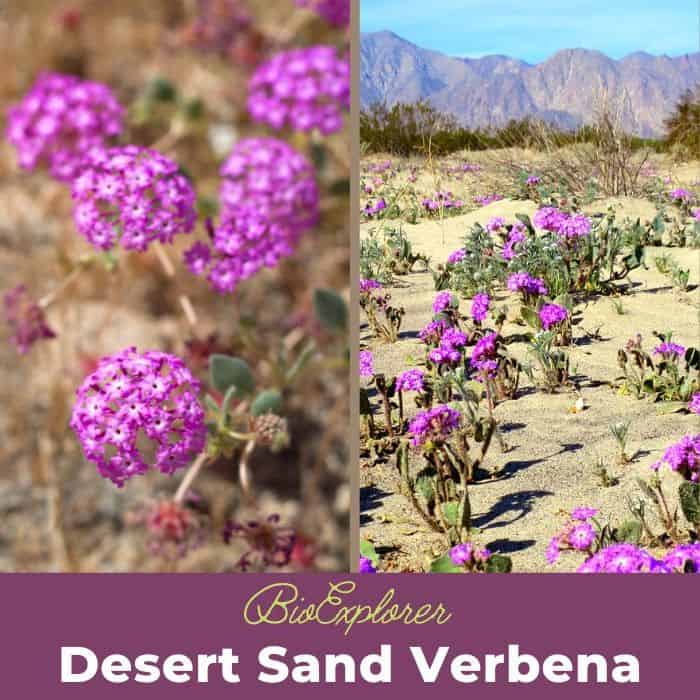
| Plantae | Caryophyllales | Nyctaginaceae | Abronia | Abronia villosa |
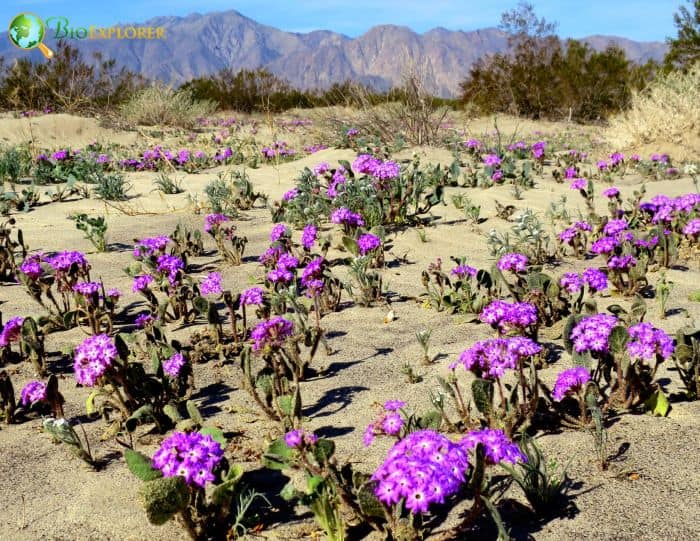
- Plant Type: Annual herb.
- Common Names: Desert Sand Verbena, chaparral sand verbana.
- Color: Lavender-pink, purple
- Flower Dimensions: 2-3 inches wide.
- Flowering Season/Months: Early Spring (February to May).
- Deserts with Desert Sand Verbena: Mojave and Sonoran, deserts of Southwestern US and Northern Mexico.
Desert Sand Verbena Characteristics
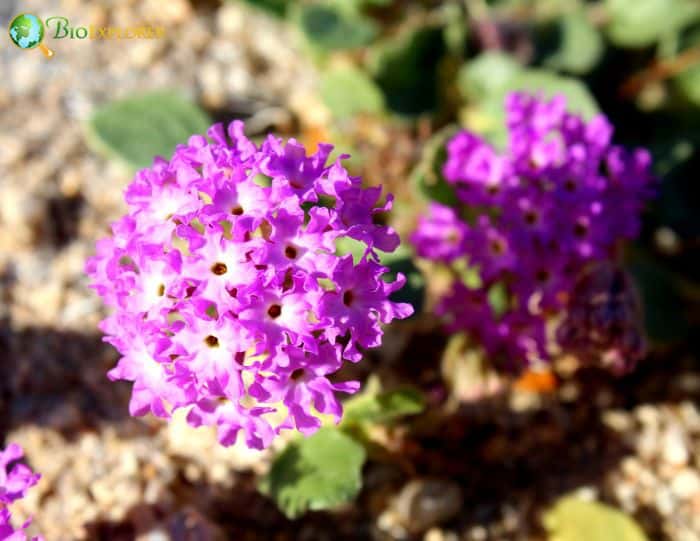
Abronia villosa is an annual herb belonging to the Nyctaginaceae family. It grows in creeping masses along the ground. The Desert Sand Verbena is a native species of the southwestern United States and Northern Mexico, growing in the sandy areas of the desert.
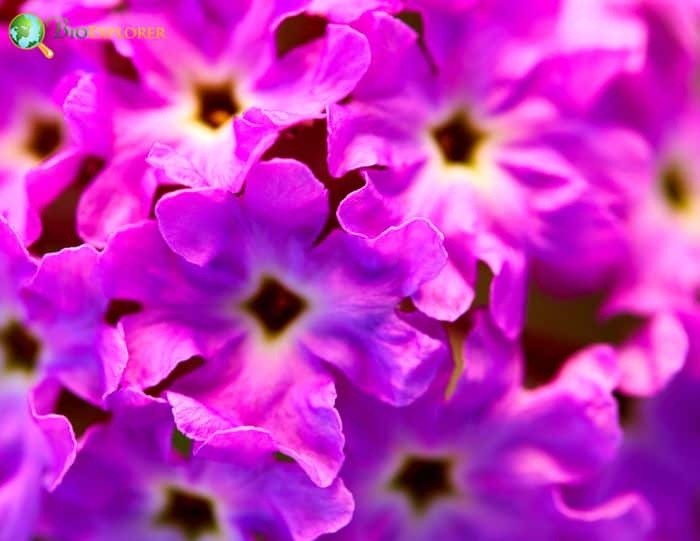
- The leaves of the Desert Sand Verbena are oval-shaped, fleshy, and about an inch long. The dull-green leaves are covered with short sticky hairs.
- The stems of the Desert Sand Verbena can trail up to 3 feet.
- The flowers of the Desert Sand Verbena are in a flower stalk with a length of up to 10 inches. The flowers are trumpet-shaped. The flowers are fragrant with 5 lobes.
- Abronia villosa cannot grow in the shade. Therefore, this species grows best in dry or moist soil.
Desert Sand Verbena Facts
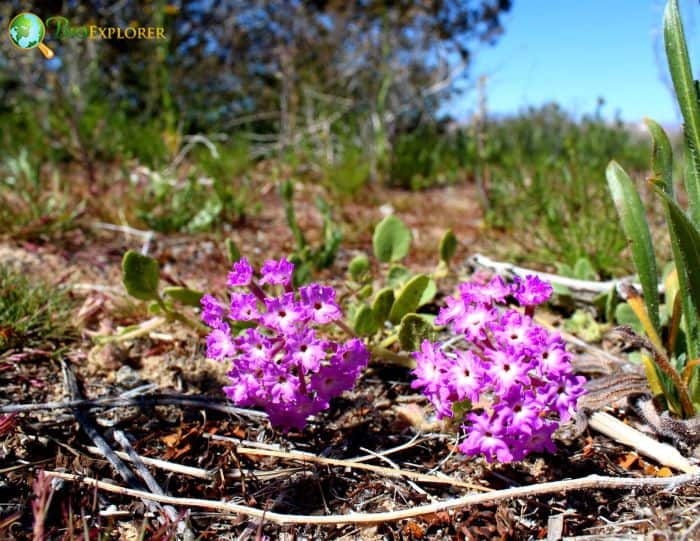
- The Abronia villosa plant[1] is medicinally used to induce urine flow.
- Scientists discovered the silver nanoparticles from the extract of the Abronia villosa. Research[2] showed that it manifests antibacterial and antifungal activities.
- The rotenoid Abronione[3] is extracted from the Abronia villosa plant. According to research[4], rotenoids are traditionally used as insecticides and pesticides.
- The Abronia villosa[5] gives off a fragrance of vanilla-like, especially at night. This plant is attractive to butterflies and bees.
- The compounds boeravinone C and lupeol are isolated from the A. villosa[6] plant and the Abronione. The boeravinone C is also a rotenoid. According to experts, rotenoids are compounds famous for being insecticides and fish poison. Also, there are studies investigating the anticancer property of rotenoids.
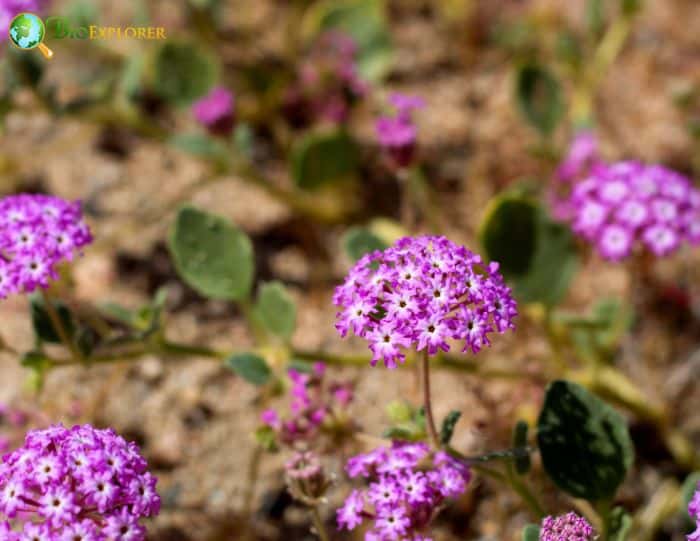
Suggested Reading: Types of Garden Flowers | Types Of Colorful Butterflies
Cite This Page
APA7MLA8Chicago
BioExplorer.net. (2025, December 14). Desert Sand Verbena. Bio Explorer. https://www.bioexplorer.net/plants/flowers/desert-sand-verbena/.
BioExplorer.net. "Desert Sand Verbena" Bio Explorer, 14 December 2025, https://www.bioexplorer.net/plants/flowers/desert-sand-verbena/.
BioExplorer.net. "Desert Sand Verbena" Bio Explorer, December 14 2025. https://www.bioexplorer.net/plants/flowers/desert-sand-verbena/.











